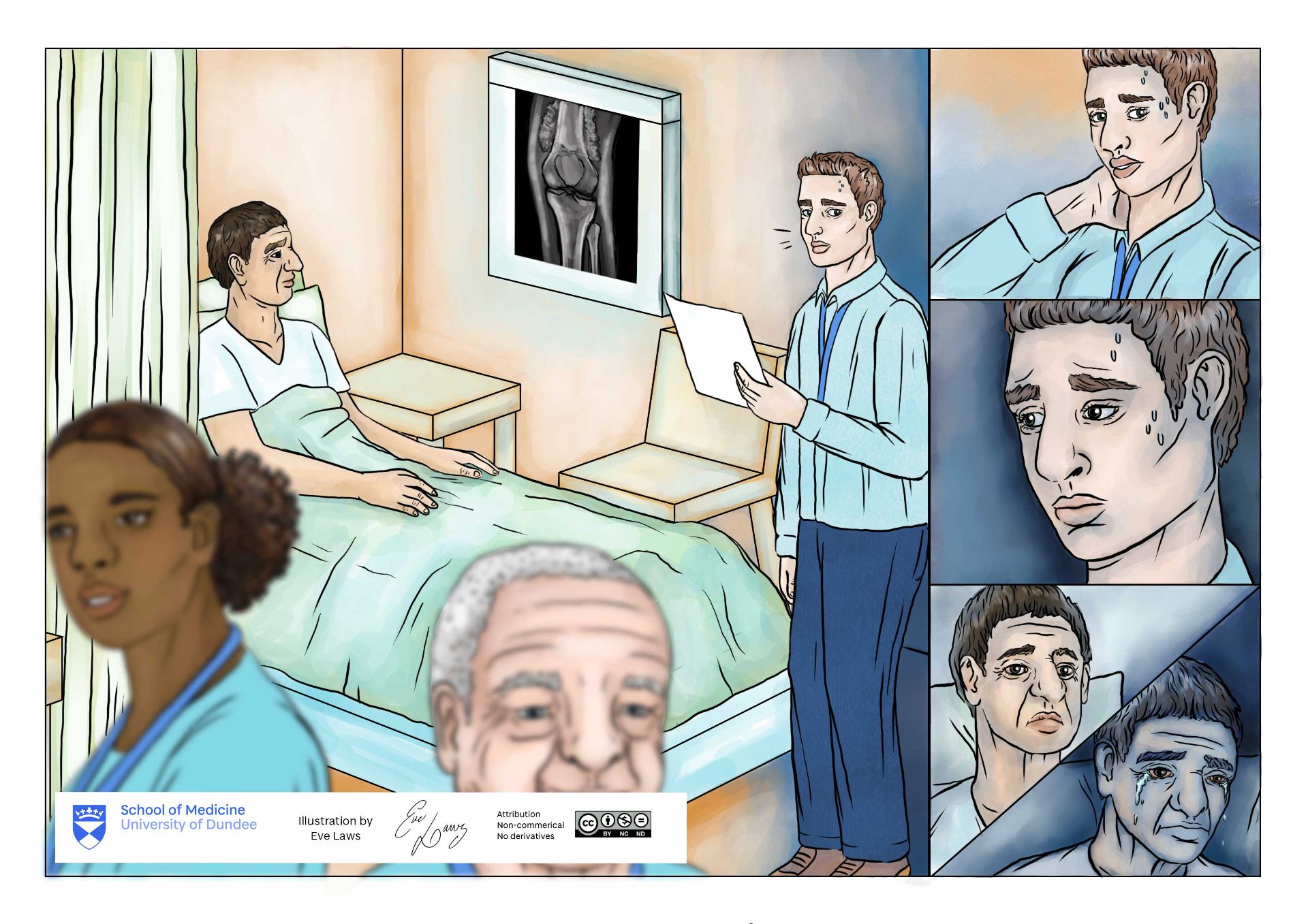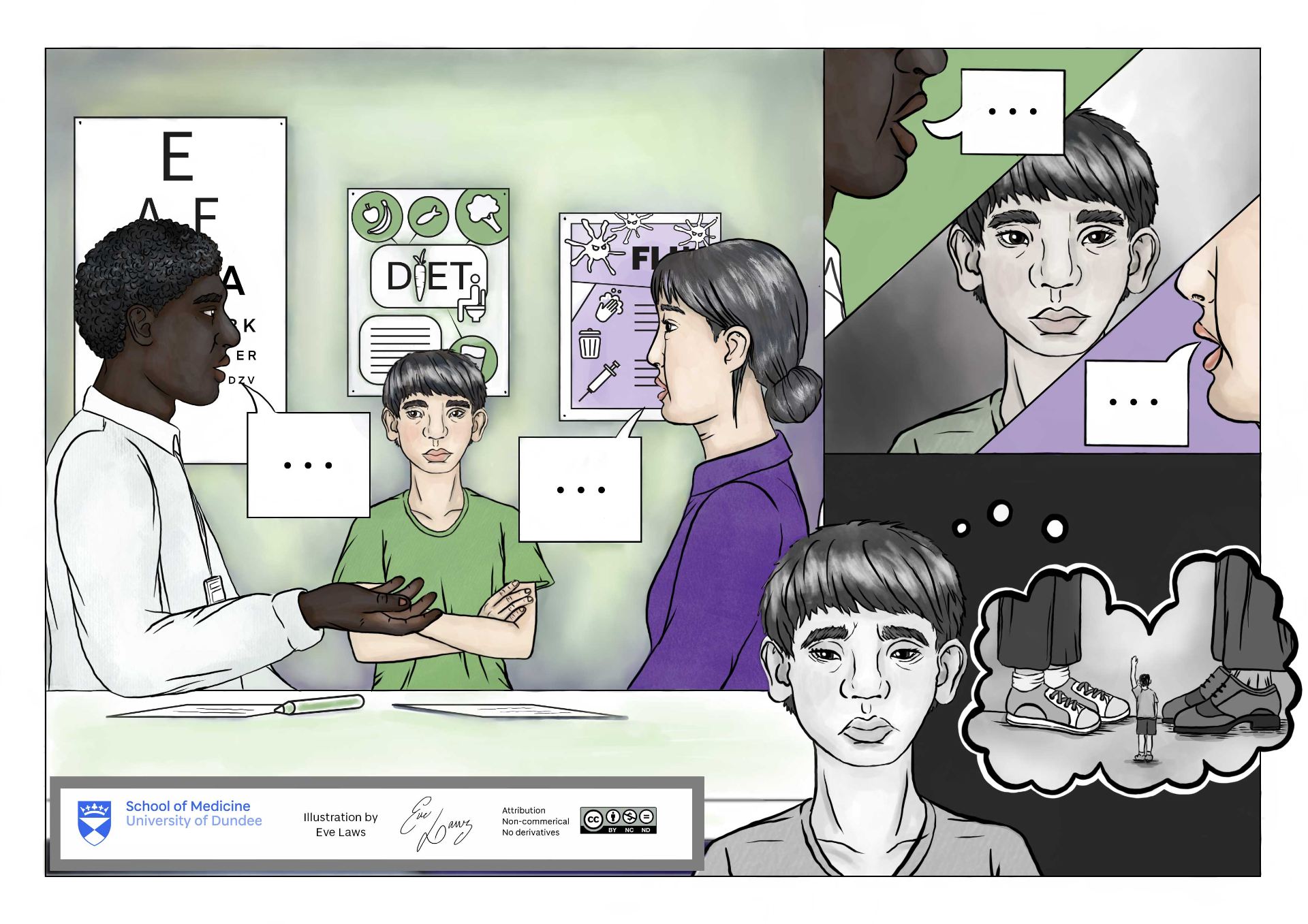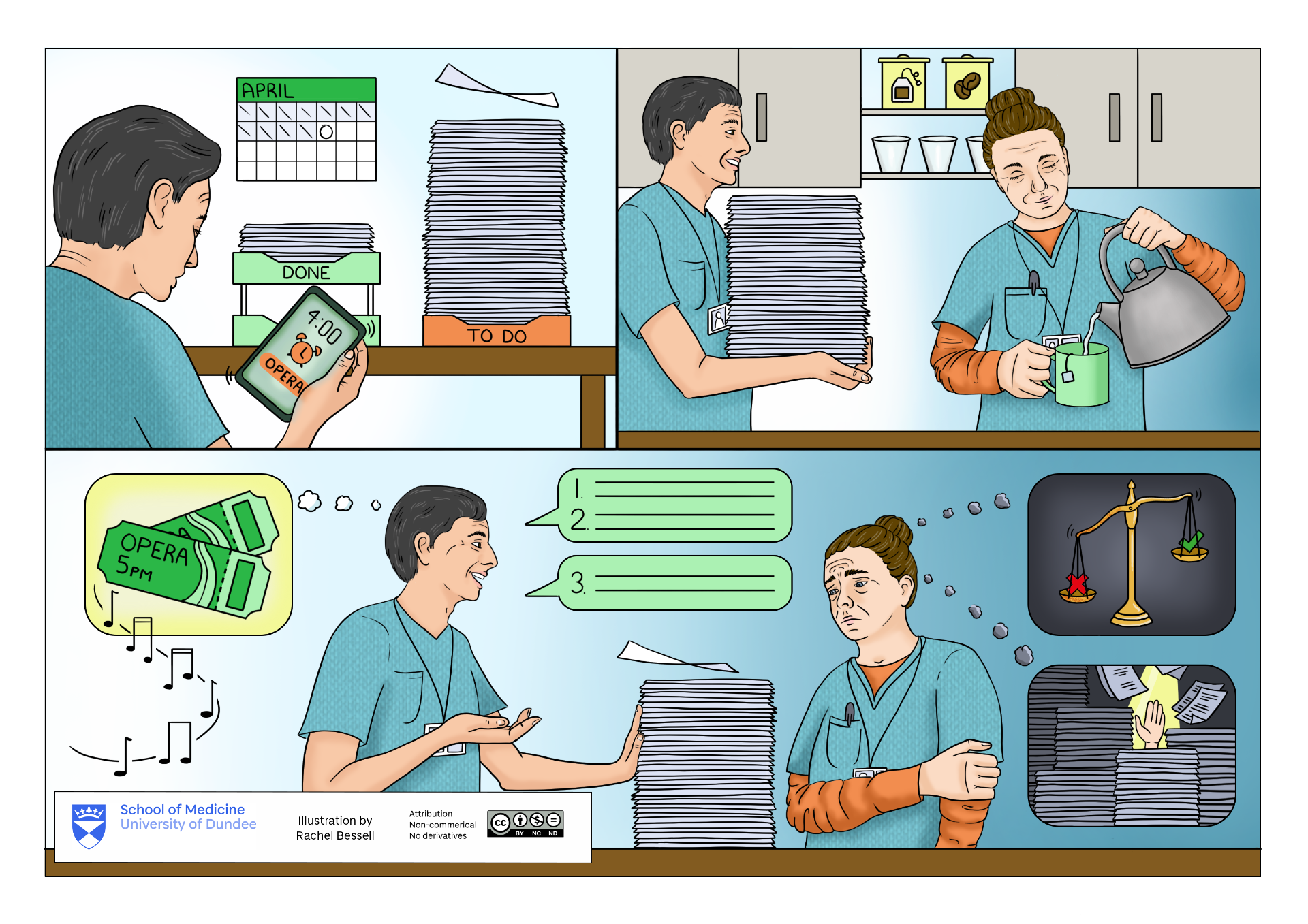
Overview
Project Title: Integrated Teaching Year 5 – Consultation Scenario Illustrations
Project Sponsor: Dr Michelle Duncan, Lecturer in Undergraduate Medicine, Dr Genevieve Duncan, Lecturer (Teaching and Scholarship)
TILT Medical Artist: Eve Laws
Student Placement: Rachel Bessell (Medical Art MSc 2021 – 2022)
For the teaching of this topic, student tutorials would be conducted in groups of 6 or 7, and for online sessions, the students would be split into breakout rooms. One of the tutorials for the students focuses on complex consultations and discussions. These consultations can involve strong emotional responses.
It was decided that pictorial representation of different scenarios would be help trigger emotional responses amongst the students and encourage thought processes and discussions.
There would be a total of 7 illustrations depicting different scenarios. Each scenario scene would fit on one A4 page to be easily printable as well as to keep the emotional impact strong and instant.
Scenario 1 – Aggressive Patient
Needed Contents:
• Young doctor in consultation room with middle-aged patient
• Patient is angry with doctor, aggressive body language
• Speech bubble with expletives

First draft of Scenario 1

Second draft of Scenario 1
Scenario 2 – Breaking Bad News
Needed Contents:
• Patient in hospital bed, busy ward environment around them
• Doctor standing by bedside, holding notes and standing by an x-ray and an empty chair
• Doctor looks awkward and uncomfortable, patient upset and alone

Draft of Scenario 2
Scenario 3 – Triadic Consultation (Child)
Needed Contents:
• Child of around 12/13, charts on the wall, notes on the desk
• Doctor and parent of patient are conversing, the child is to appear “left out”

Draft of Scenario 3
Scenario 4 – Triadic Consultation (On the Phone)
Needed Contents:
• Patient, a relative and a doctor
• Patient in hospital bed looking very ill
• Doctor on phone to the relative, the relative is alone
• Doctor appears upset to be having the conversation

Draft of Scenario 4
Colour Palettes
It is well known that colour evokes emotion. It was taken into account that the illustrations should be powerful enough to be effective in black and white, but colour could be used to enhance the atmosphere and emotive response.

Each illustration contains a unique colour palette with high contrast. Scenario 1 utilises red – the colour of passion and anger, contrasting against the cool and calm blue and yellow hues.

Scenario 2 utilises the gentle pastel colours typically used in a hospital environment (yellow, green, blue), but the blue darkens as the patient becomes obviously upset.

Highly contrasting purple and green colours make this illustration unique from its predecessors. The colours fade into greyscale to symbolise that the child feels as if he is ‘fading’ also.

Gentle colours for another hospital setting. The two main contrasting colours are subtle (navy and pastel yellow), but bring attention to the time zone difference between the relative and the doctor.
Final Outcome
Scenario 1 – Aggressive Patient

Scenario 2 – Breaking Bad News

Scenario 3 – Triadic Consultation (Child)

Scenario 4 – Triadic Consultation (On the Phone)

Scenario 5 – Triadic Consultation (Elderly Patient)
Illustrations 5, 6 and 7 by Medical Art student placement Rachel Bessell

Scenario 6 – Discussion Between Colleagues

Scenario 7 – Unsure Patient

